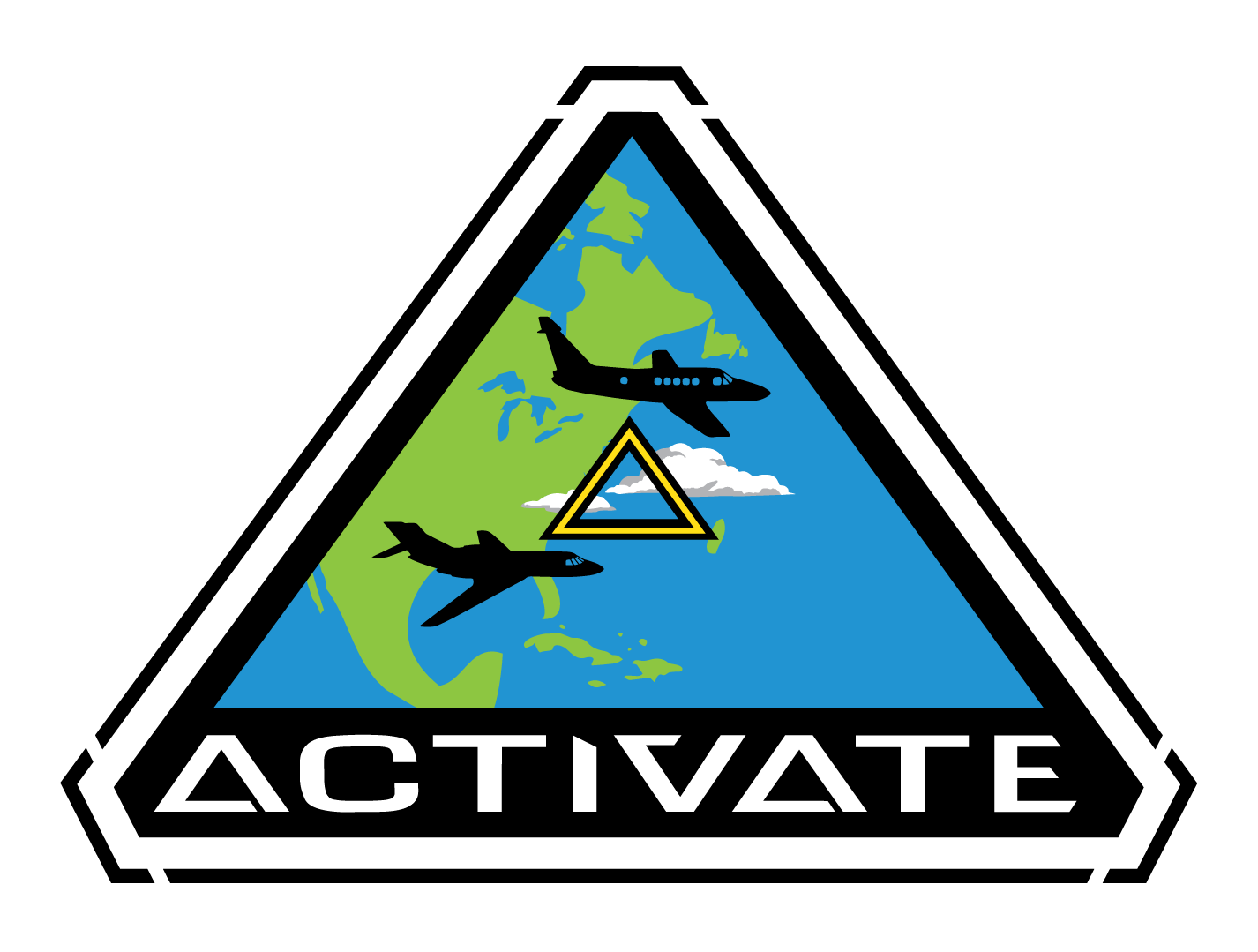What is LEARN?
The NASA LEARN Project is an innovative program that provides educators with on-site research and training with NASA Scientists in the summer and guided research projects that continue on throughout the school year. These educators conduct their own research with help of a team of NASA Scientists and share and integrate these projects into the classroom.
“Never in my career as a teacher have I actually looked at data in this way. LEARN is totally different from everything else- but it goes along with the trend of not only better pedagogy but also expanding personal understanding of science. We don’t often model “being the scientist” for our students, but we ask them to do it every day for 45 minutes. LEARN allows me to be a better model of a scientist for my students.”
–Jodie Harnden, LEARN teacher
What does LEARN Research look like?
The LEARN program provides opportunities for on-site and off-site research throughout the year!
Some of the cutting-edge NASA science mission work that teachers can engage with include CAPABLE, CALIPSO, and DISCOVER-AQ.
July 7-11 & 14-18 2014
During the on-site portion, Educators will:
- Receive approximately 70 hours of professional development during the summer training
- Select an atmospheric science topic of interest
- Begin research on-site with their Research Team and NASA scientist mentor
- Receive GLOBE atmosphere training and certifications
Continued summer research
After the two-week visit, LEARN educators will:
- Continue to interact with their research team with weekly virtual collaboration meetings
- Get input from other team members and their NASA scientist mentor
- Participate in a Data Meeting webinar with the entire cohort to present the progress of their work at the end of the summer
School-year research
Once teachers return to their classroom, they will:
- Continue collaborations with their NASA scientist mentor and their Research Team through monthly webinars
- Collaborate on how to integrate their research project into classroom lessons for their students
- Prepare their research for the final poster in July 2015
- Present their work at the poster session either at NASA Langley or virtually
Meet The Team
NASA Scientists work with the LEARN educators to provide expertise,
guidance, and advice both for on-center weeks and help throughout the year.
NASA Scientists
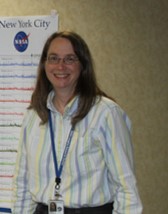
- Topics of interest: ozone, water vapor, NO2, PM 2.5, meteorology, air quality (EPA/DEQ), CAPABLE, GLOBE instruments, hand-held air quality instruments, MyNASAData, TEMPO
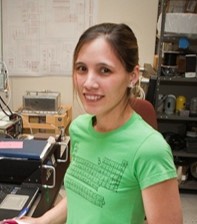
- Topics of interest: CO2, ASCENDS, SEAC4RS, DISCOVER-AQ

- Topics of interest: Aerosols, PM2.5, CALIPSO, AERONET, EPA/DEQ
LEARN 2014-2015
LEARN Interns
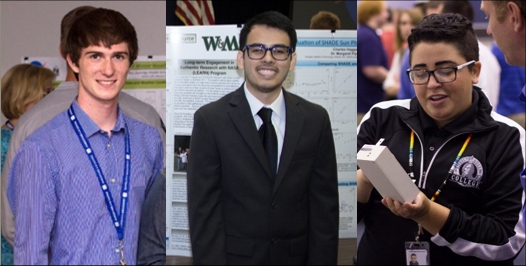
Stephen Haggard: Georgia Institute of Technology
Robert Bujosa: The College of William & Mary
Cara Moulton: Sitting Bull College
Samantha Adams: Pan American International High School, Bronx, NY Ellen Babcock: WT Woodson High School, Fairfax, VA Jodie Harnden: Sunridge Middle School, Pendleton, OR Susan Dougherty: Stamford High School, Stamford, CT Sue McIninch: New Kent High School, New Kent, VA Chris Marentette: Groves High School, Beverly Hills, MI Gay Reilly: Virginia Space Grant Consortium, Hampton, VA Kathleen Breen: Waldorf School of Baltimore, Baltimore, MD Denise Magrini: Mountain View Middle School, Mendham, NJ Melissa Niemi: Arnold Magnet Academy, Columbus, GA Patricia Pitton: St. Pius X School, Norfolk, VA Angela Rizzi: Our Lady of Mount Carmel, Newport News, VA Eric Thuma: Stoney Creek High School, Rochester Hills, MI Jeff Timmerman: Lake Taylor High School, Norfolk, VA
LEARN 2013-2014
LEARN Interns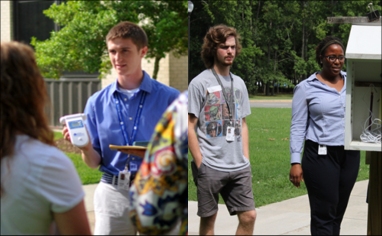
Stephen Haggard: Grafton High School
Alec Weisman: Baldwin Wallace University
Simone Hyater-Adams: Hampton University
Chris Marentette: Groves High School, Beverly Hills, MI
Gay Reilly: Cooper Elementary, Hampton, VA
Susan Dougherty: Stamford High School, Stamford, CT
Sue McIninch: New Kent High School, New Kent, VA
Jackie Calder: Henrico High School, Richmond, VA
Ellen Babcock: WT Woodson High School, Fairfax, VA
Roy Landers: Sophia Academy, Atlanta, GA
Tim Kubinak: John Yeates Middle School, Suffolk, VA
Samantha Adams: Pan American International High School, Bronx, NY
Jodie Harnden: Sunridge Middle School, Pendleton, OR
Alicia Dobyns: York High School, Yorktown, VA
LEARN 2012-2013
LEARN Intern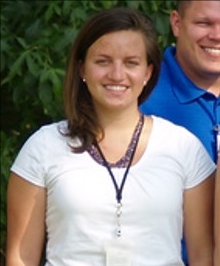
- Topics of interest: Meteorology, data acquisition, Excel Guru
Alicia Dobyns: York High School, Yorktown, VA
Ellen Babcock: WT Woodson High School, Fairfax, VA
Jodie Harnden: Sunridge Middle School, Pendleton, OR
Roy Landers: Sophia Academy, Atlanta, GA
Samantha Adams: Pan American International High School, Bronx, NY
Sandy Ranstead: Corporate Landing Middle School, Virginia Beach, VA
Tim Kubinak: John Yeates Middle School, Suffolk, VA
LEARN Projects
2014-2015
Each link given below will open its target Adobe PDF file in a New Window.
LEARN teachers choose a topic of interest that they want to research.
Below are the current teachers projects.
After they picked the projects, they were put into research teams with other projects with similar themes.
 |
Samantha Adams: Pan American International at Monroe, Bronx, NY PBATs and Precipitable Water: Measuring Water Vapor with an Infrared Thermometer |
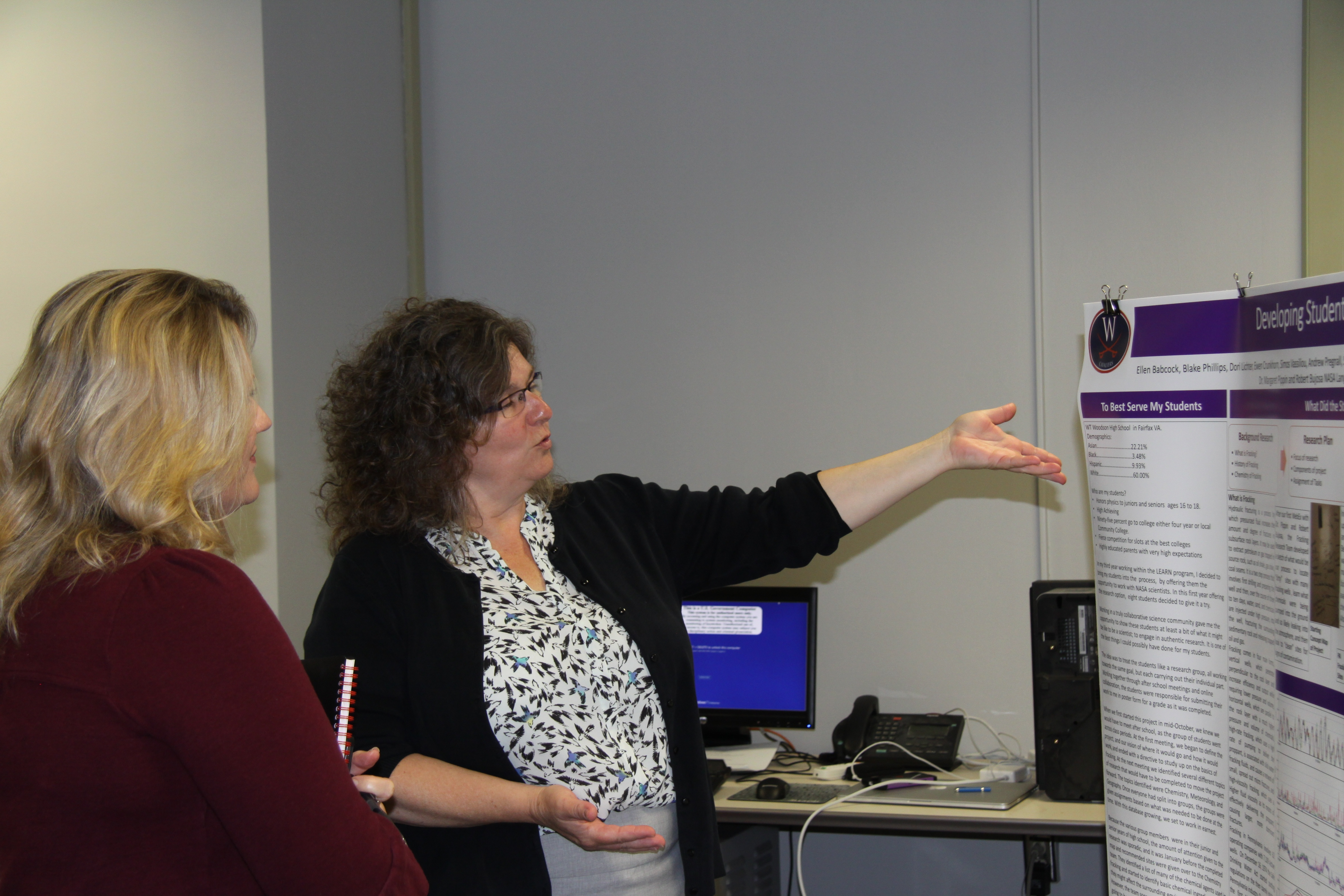 |
Ellen Babcock: WT Woodson High School, Fairfax, VA Developing Student Researchers |
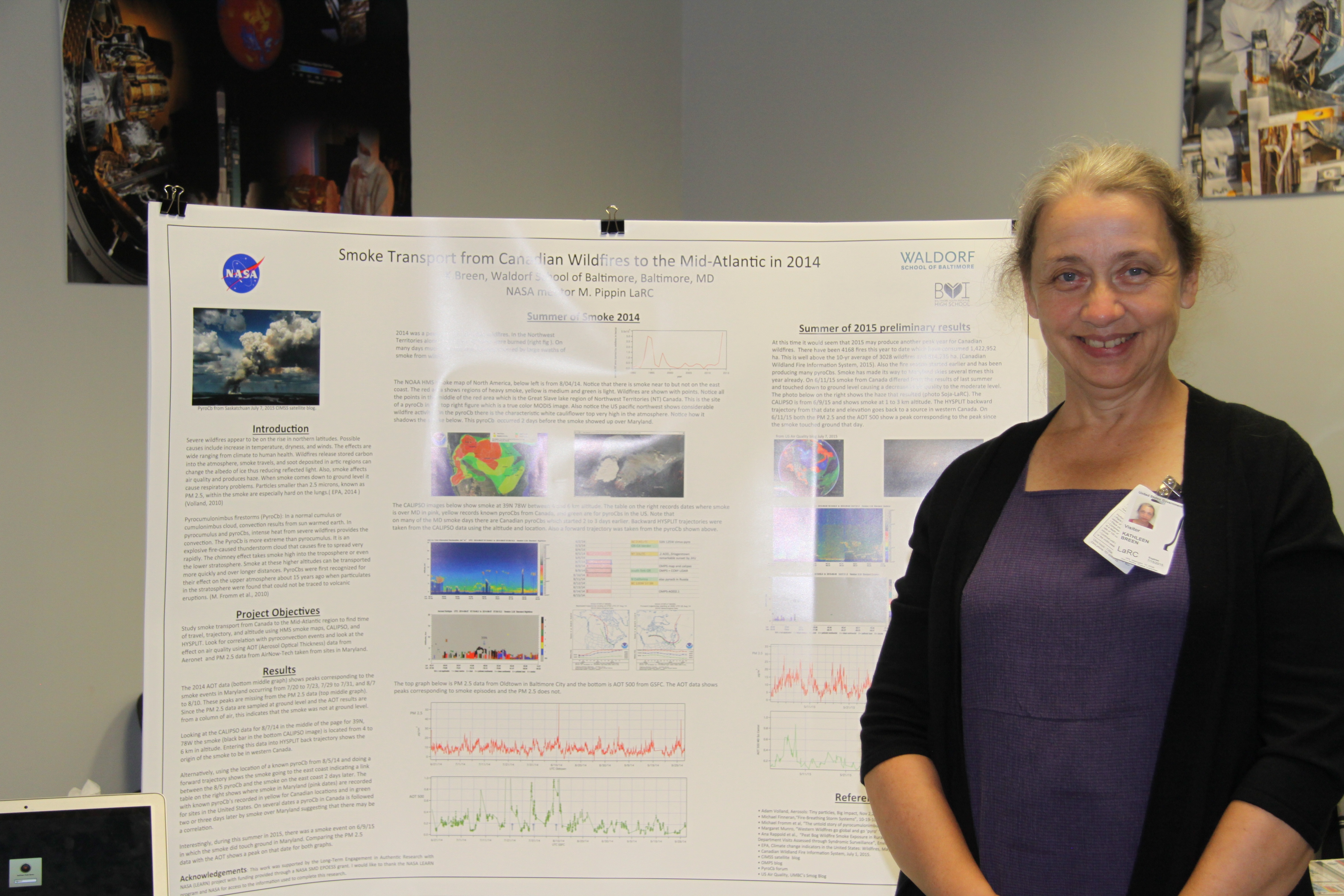 |
Kathleen Breen: Waldorf School of Baltimore, Baltimore, MD Smoke Transport from Canadian Wildfires to the Mid-Atlantic In 2014 |
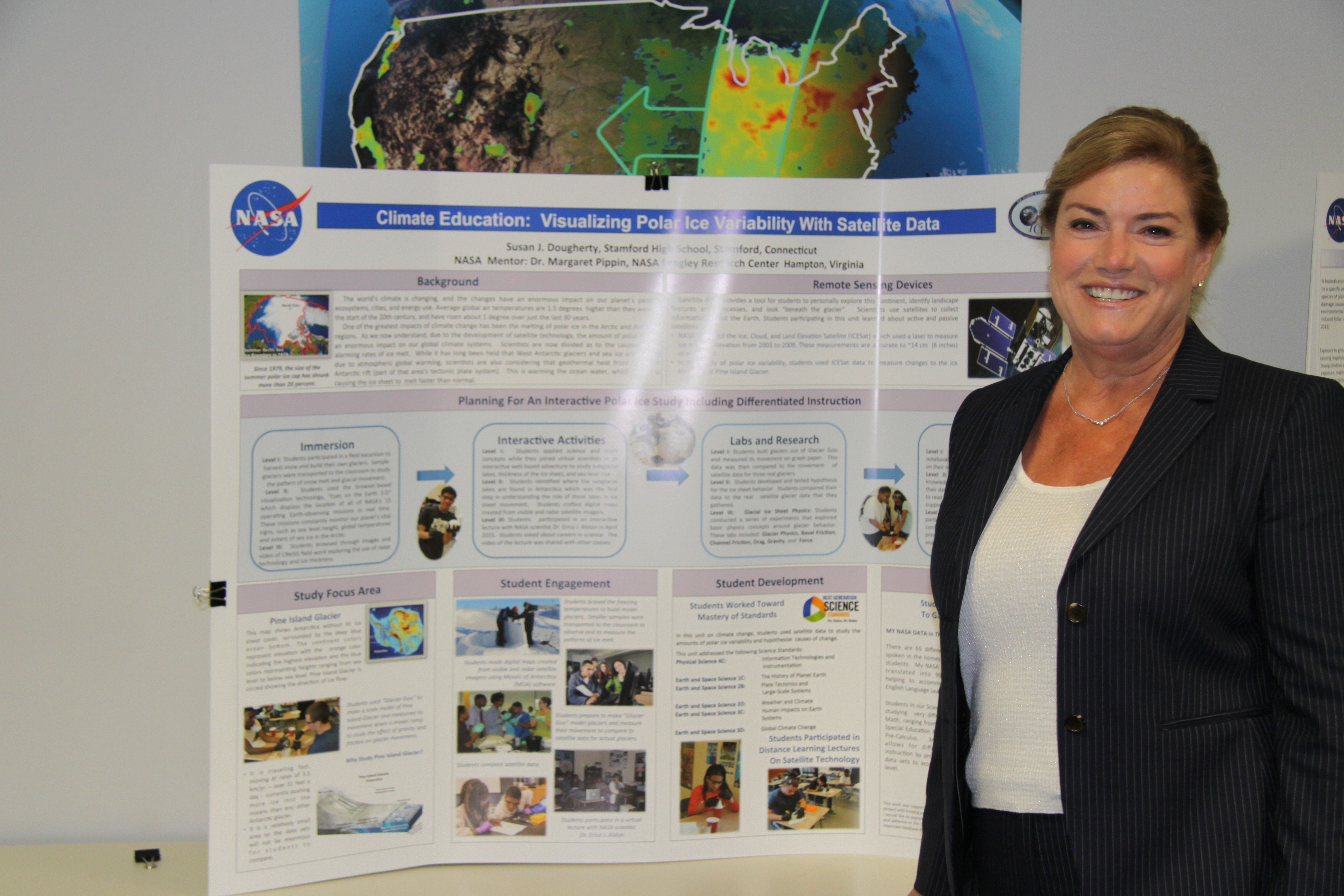 |
Sue Dougherty: Stamford High School, Stamford, CT Climate Education: Visualizing Polar Ice Variability With Satellite Data |
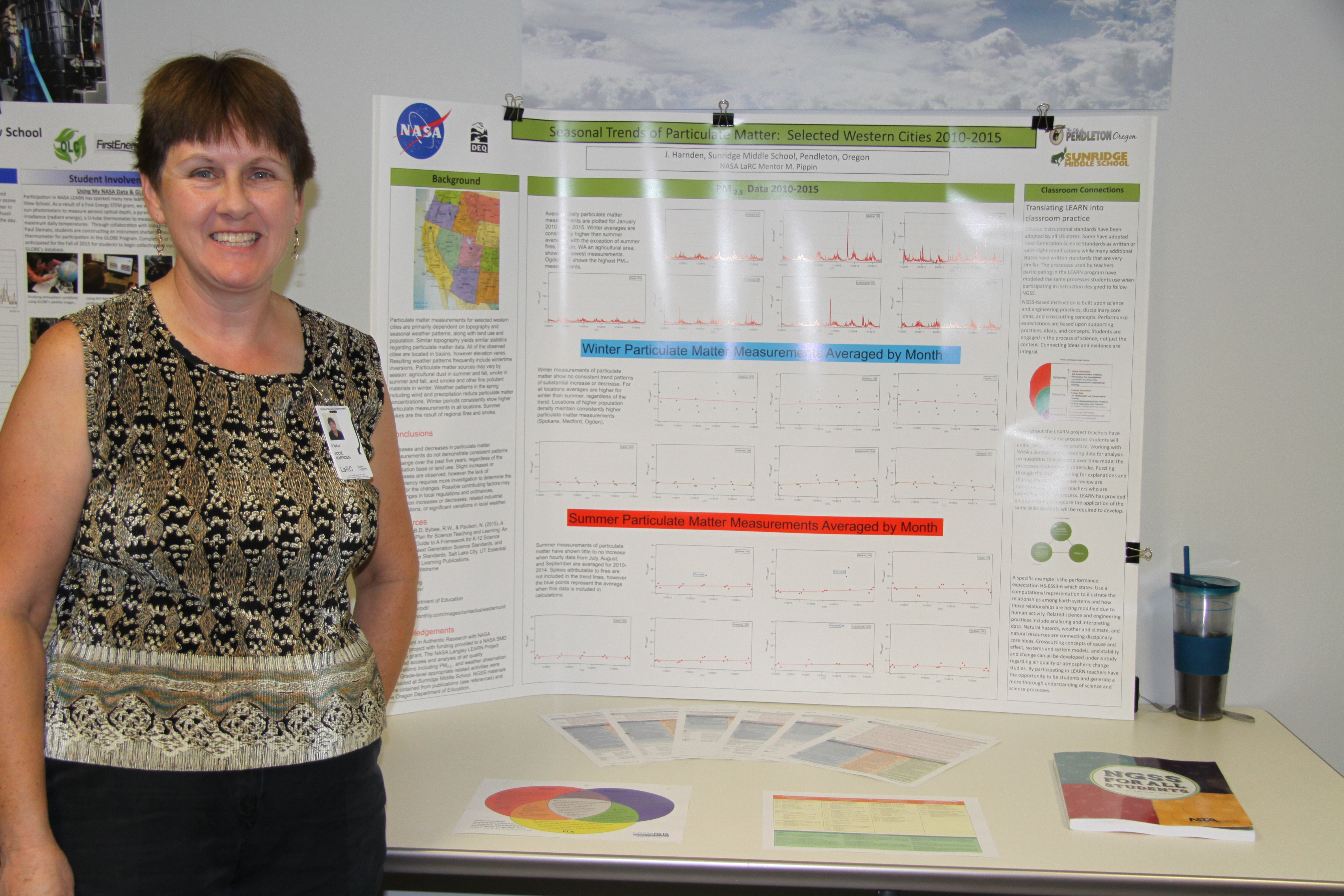 |
Jodie Harnden: Sunridge Middle School, Pendleton, OR Seasonal Trends of Particulate Matter: Selected Western Cities 2010-2015 |
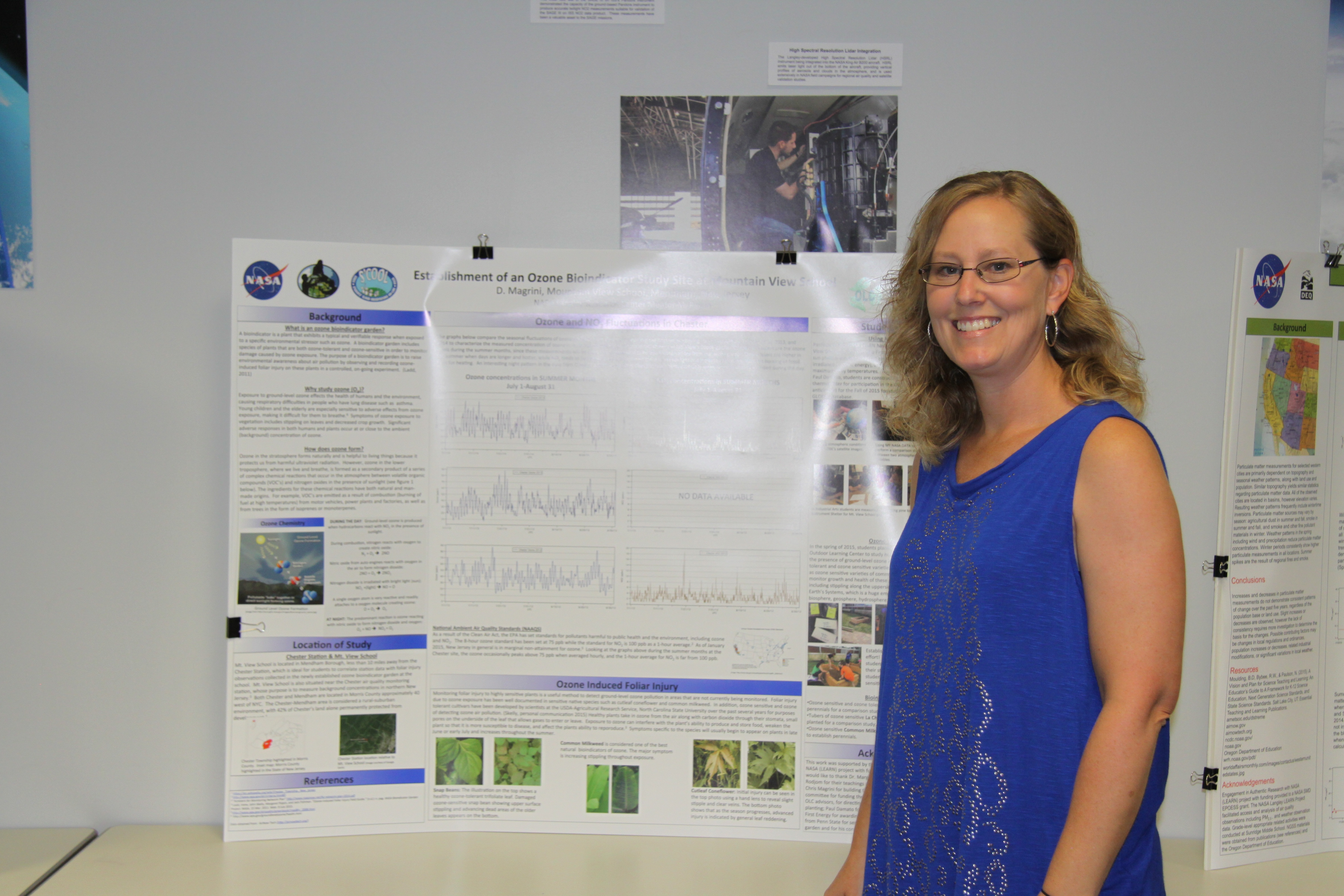 |
Denise Magrini: Mountain View Middle School, Mendham, NJ Establishment of an Ozone Bioindicator Study Site at Mountain View School |
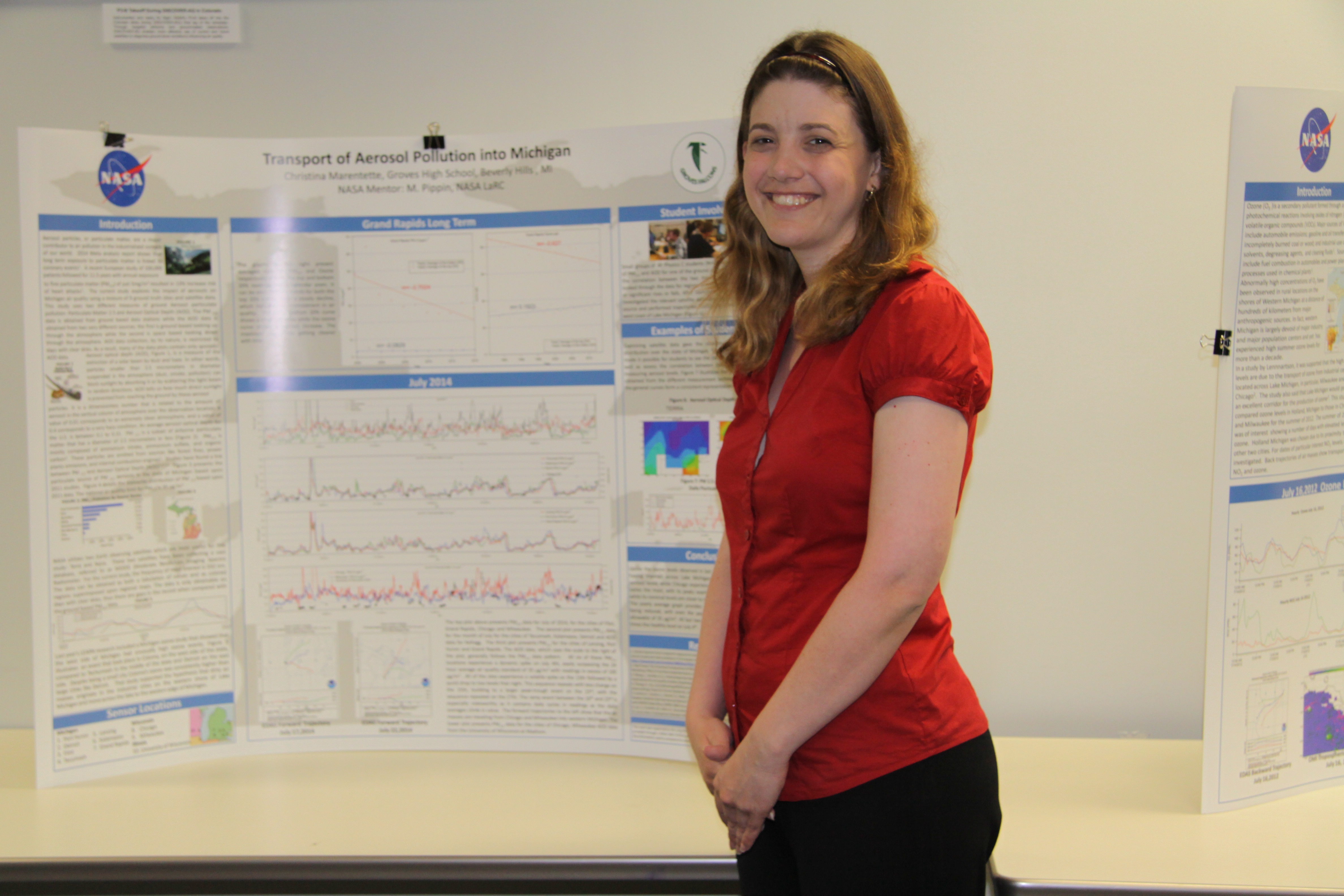 |
Chris Marentette: Groves High School, Beverly Hills, MI Transport of Aerosol Pollution into Michigan |
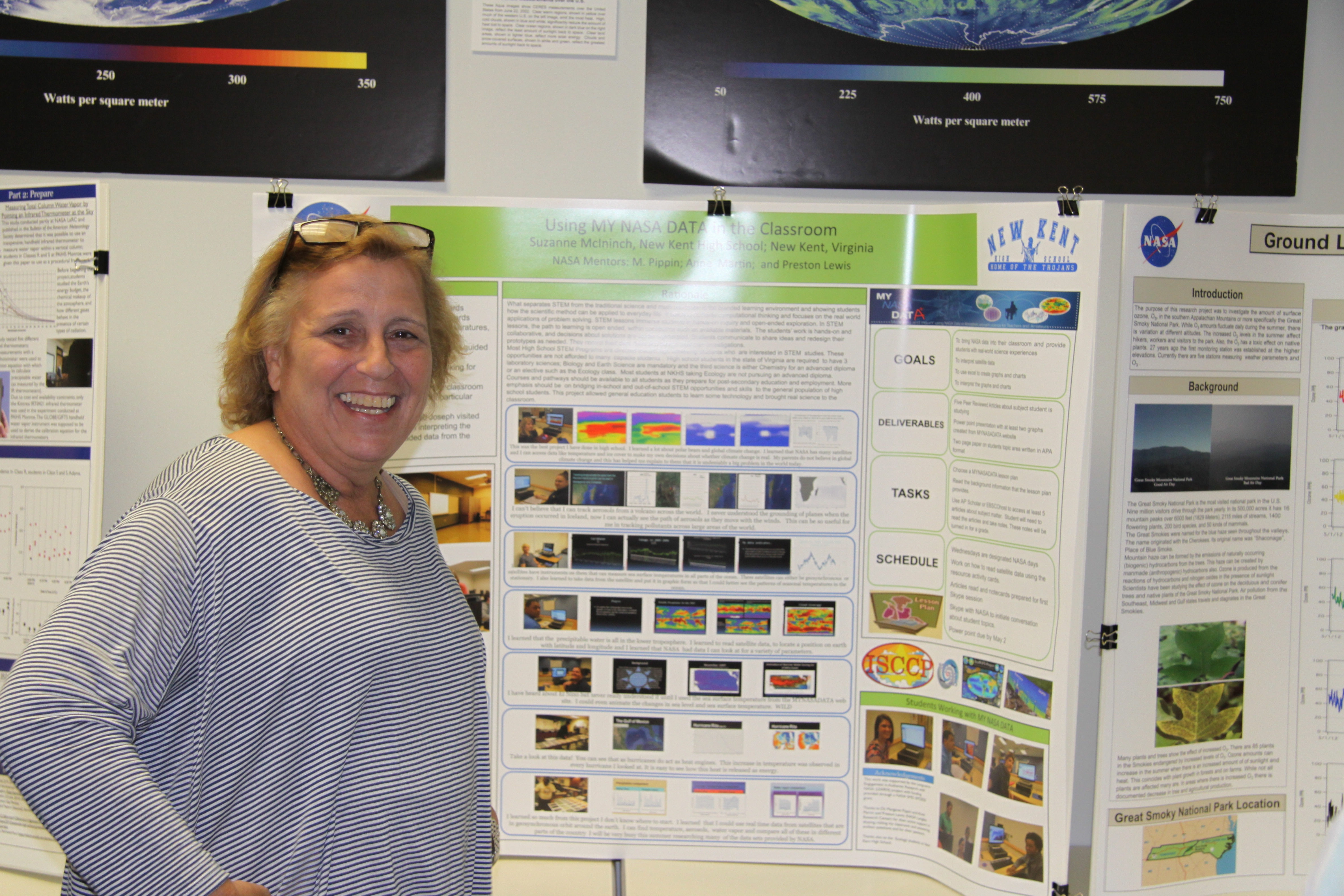 |
Sue McIninch: New Kent High School, New Kent, VA Using MY NASA DATA In the Classroom |
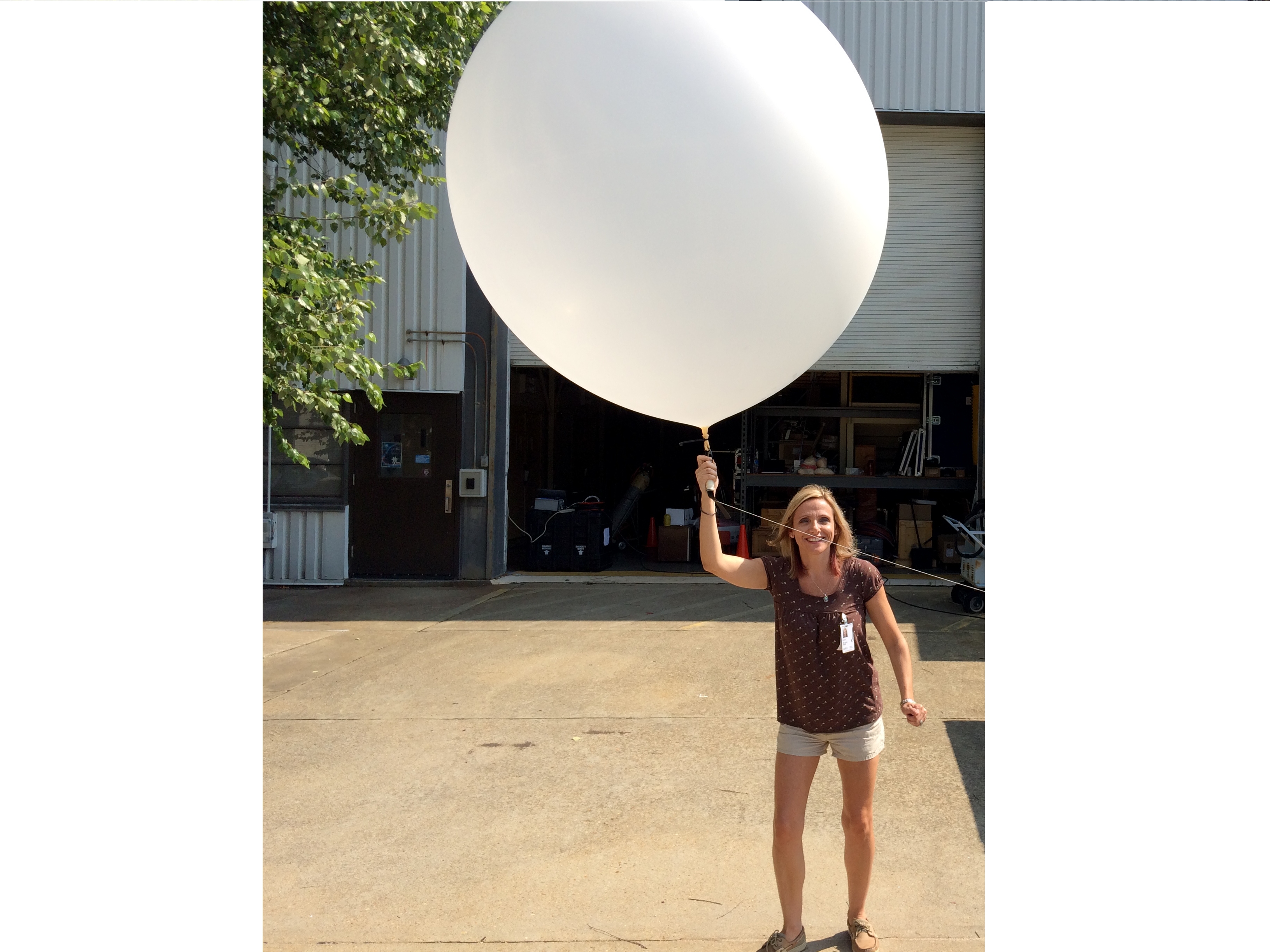 |
Melissa Niemi: Arnold Magnet Academy, Columbus, GA Ozone Levels in Urban and Rural Communities in Georgia |
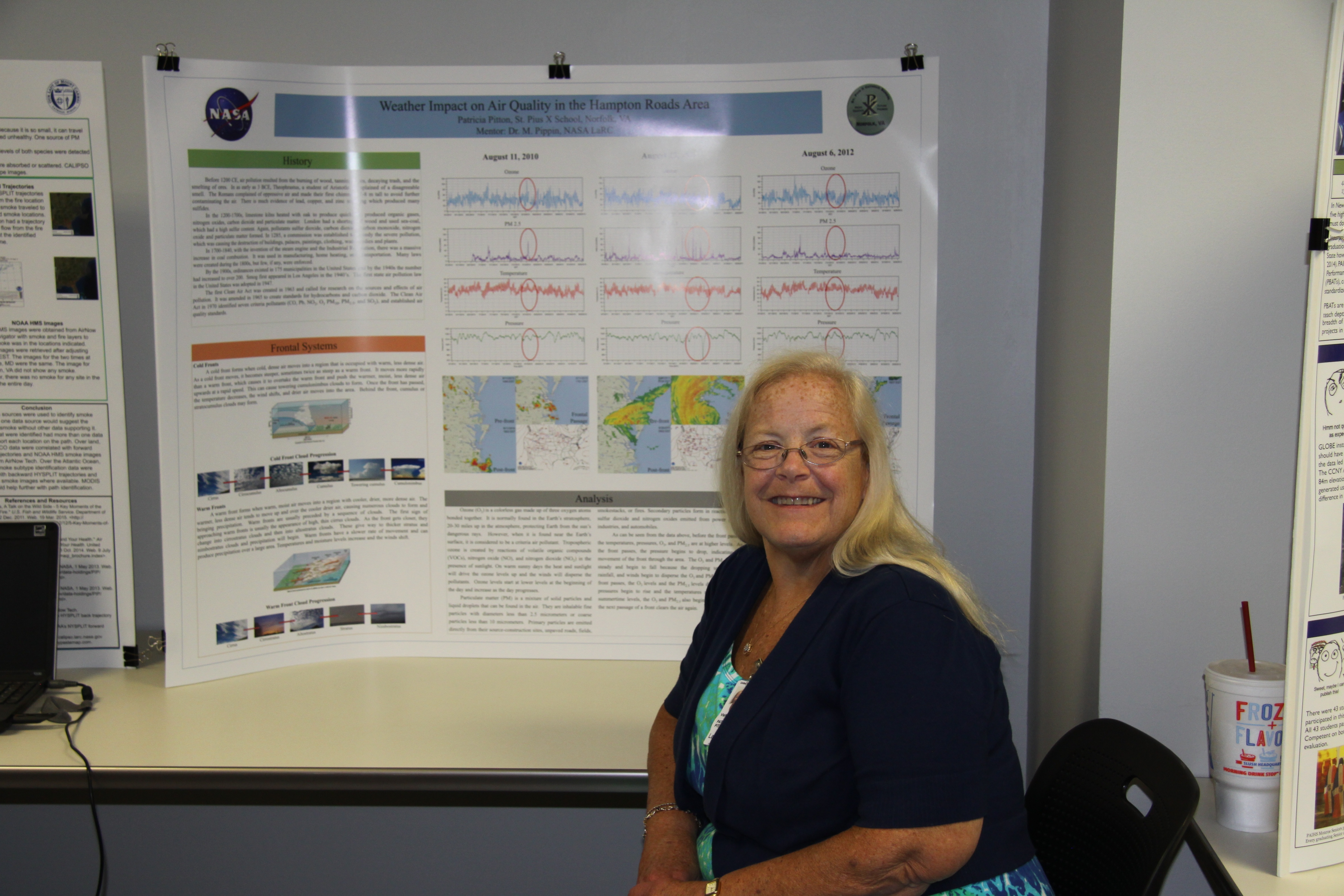 |
Patricia Pitton: St. Pius X School, Norfolk, VA Weather Impact on Air Quality in the Hampton Roads Area |
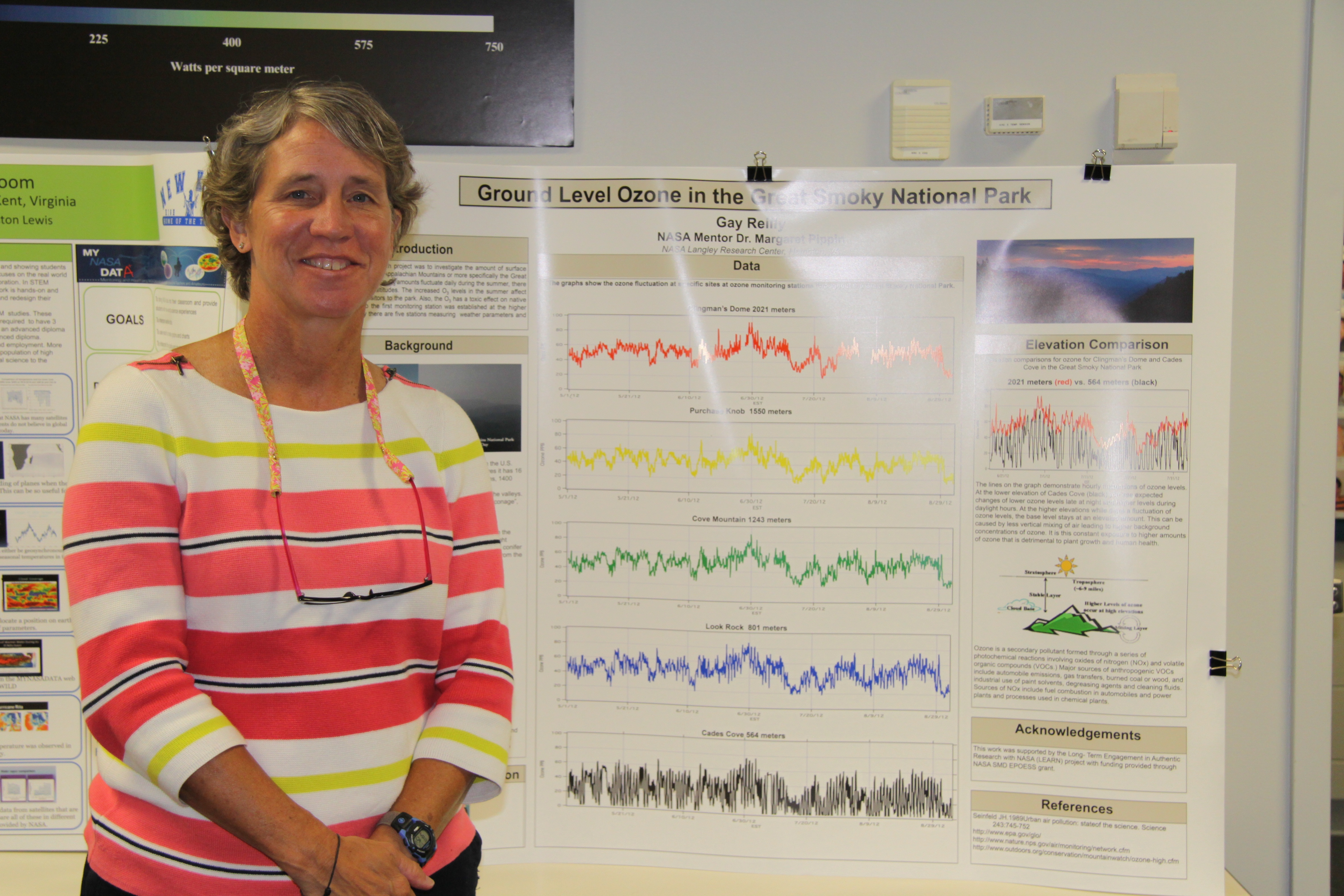 |
Gay Reilly: Virginia Space Grant Consortium, Hampton, VA Ground Level Ozone in the Great Smoky National Park |
 |
Angela Rizzi: Our Lady of Mount Carmel, Newport News, VA Long Range Transport of Smoke Plumes from the 2011 Lateral West Fire |
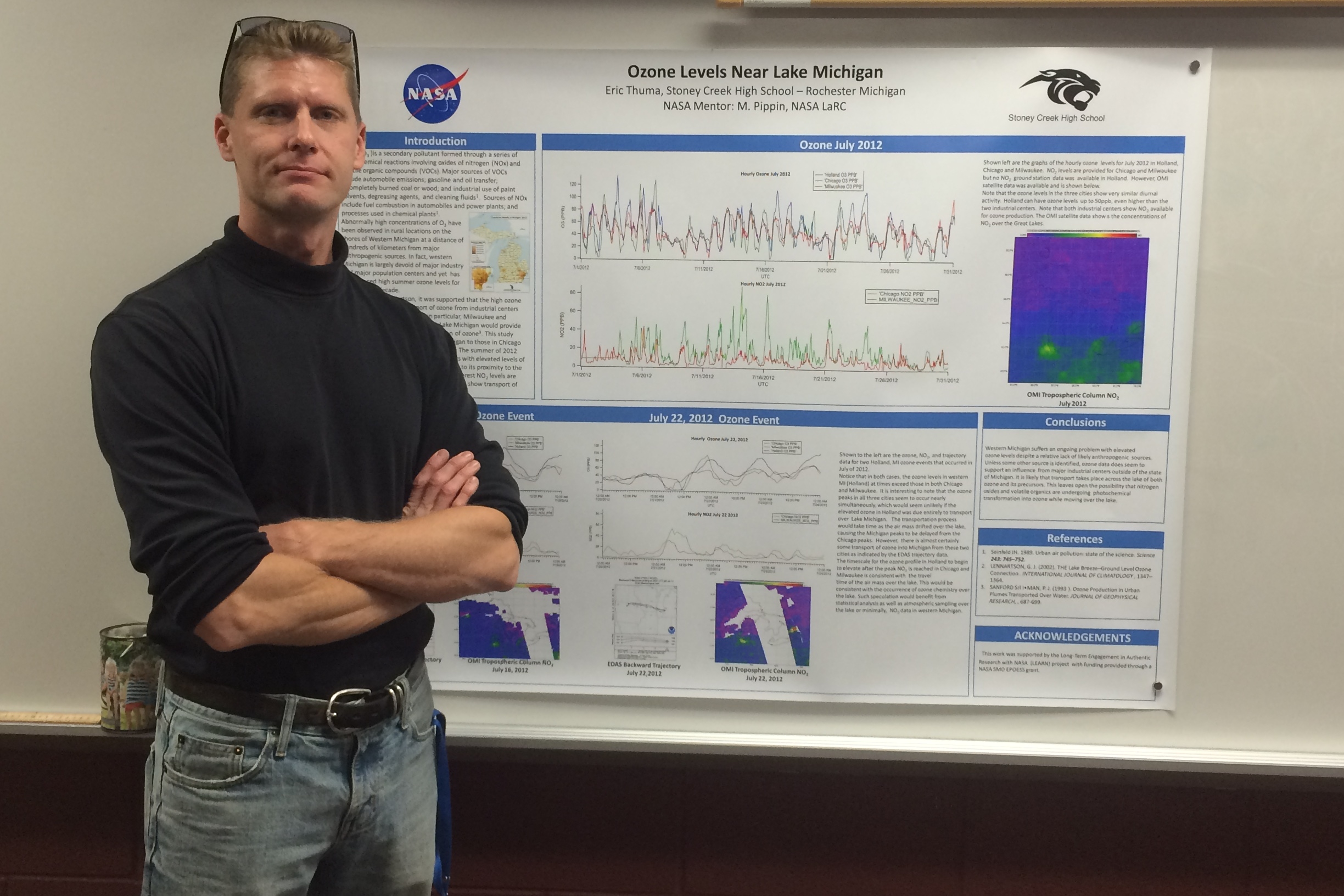 |
Eric Thuma: Stoney Creek High School, Rochester Hills, MI Ozone Levels Near Lake Michigan |
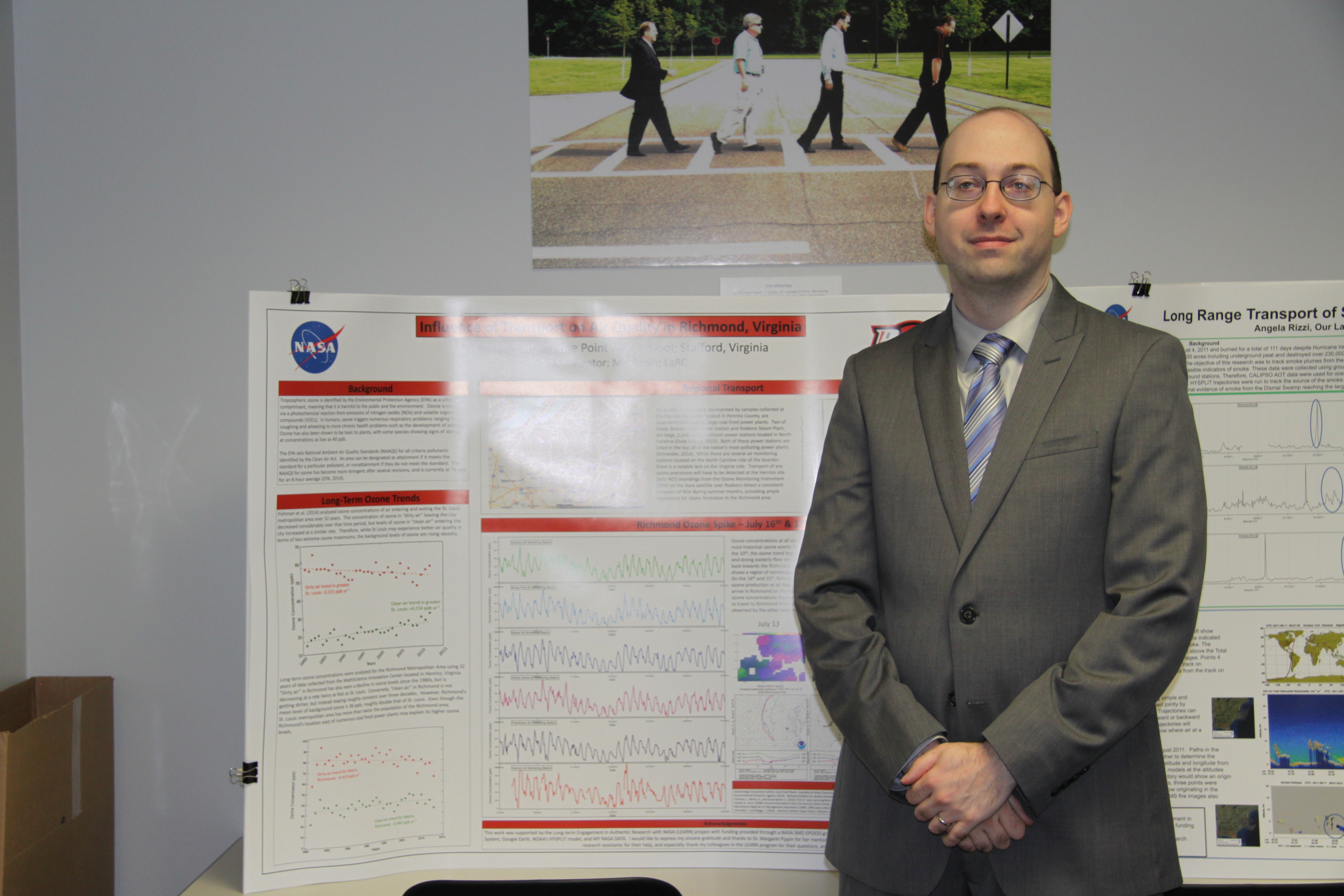 |
Jeff Timmerman: Brooke Point High School, Stafford, VA Influence of Transport on Air Quality in Richmond, Virginia |
2013-2014
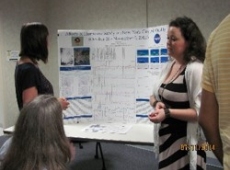 |
Effects of Hurricane Sandy on New York City Air Quality – Samantha Adams This work is a continuation on last year’s project, “Asthma and PM2.5 in New York”. Typically, elevated PM2.5 concentrations are correlated with temperature inversions. However, during Hurricane Sandy, elevated PM2.5 concentrations were not correlated with temperature inversions, but rather with increased wind speeds from the hurricane. |
 |
What Is It and Where Did It Come From? – Ellen Babcock Angstrom Exponent values can be used to determine a relationship between aerosols and their size and composition. Larger values indicated a larger effective radius, meaning the aerosol is more likely to be of natural origin. Smaller values indicated a smaller effective radius and correlate with increased concentrations of PM2.5. |
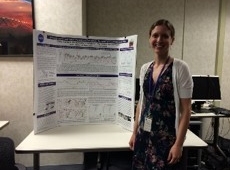 |
Ozone Signatures and Frontal Passages at Shenandoah National Park and Richmond, Virginia – Jackie Calder Although Shenandoah National Park is located in rural Virginia and relatively free of local pollution, episodes of high ozone spikes greater than that of urban areas such as Richmond were measured. This can be primarily attributed to air mass trajectories and boundary layer chemistry. Ozone measurements at Shenandoah National Park and the Math and Science Innovation Center in Richmond, VA were compared during the summer of 2012. |
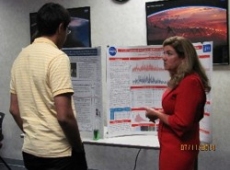 |
The Correlation of Autism Birth Rates and Surface Ozone in the United States – Susan Dougherty Autism rates in the United States have nearly doubled since 2000 and is believed to effect 1 out of every 68 8-year-olds. In 2014, a study from Harvard School of Public Health concluded that women living in areas of elevated levels of air pollution are up to twice as likely to have a child with autism as woman living in areas of low air pollution. This study aimed to provide a correlation between ozone concentrations and autism prevalence, but no correlation could be established. |
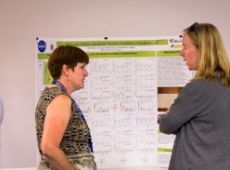 |
Particulate Matter and Winter Weather Conditions of Pendleton, OR – Jodie Harnden Pendleton, OR is located in a basin, which results in stagnant air during winter. While concentrations of various pollutants may decrease during this time, particulate matter dramatically increases due to cold inversions trapping air in the basin. Therefore, in some areas, weather conditions are expected to correlate with high or low concentrations of particulate matter. |
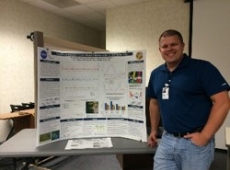 |
Variability of Tropospheric Carbon Dioxide in the Greater Houston Metropolitan Area – Tim Kubinak Carbon dioxide in the troposphere has become an increasing concern in recent decades. This study investigated the factors associated with local carbon dioxide concentrations. Due to the plethora of available data, the Houston Metropolitan Area was selected as the location of study. |
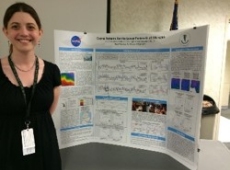 |
Ozone Patterns for the Lower Peninsula of Michigan – Christina Marentette According to a 1979-2005 climatology study, ozone levels in southern Michigan are greater than that of large urban areas in the state. Across Michigan, ozone concentrations increase throughout the day with large maximums in southern cities. |
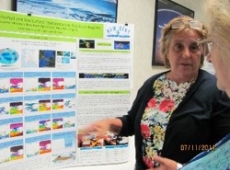 |
Correlation of Chlorophyll and Sea Surface Temperature in Sub Artic Regions – Sue McIninich Overall productivity of phytoplankton is driven by a combination of factors. Previous research suggested that phytoplankton blooms were restricted to areas free of ice. However, during colder years, phytoplankton are better able to feed under the ice resulting in blooms, but their activities are not detected by satellite. |
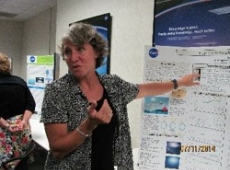 |
From the Atmosphere to the Classroom – Gay Reilly Handheld sun photometers can provide accurate aerosol optical thickness for a fraction of the cost of a research-grade instrument and be a valuable classroom resource. During the first half of 2014, over 600 measurements were taken with the GLOBE sun photometer at NASA Langley Research Center and compared to AERONET, an on site research-grade instrument. |
Evaluation of SHADE Sun Photometer for GLOBE
– Charles Haggard, Margaret Pippin
Evaluation of the Handheld GLOBE Sun Photometer as a Classroom Resource
– Robert Bujosa, Margaret Pippin
Evaluation of Calitoo Handheld Sun Photometer for Classroom Use
– Cara Moulton, Margaret Pippin
2012-2013
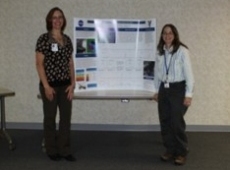 |
2011 Lateral West Fire of Virginia – Alicia Dobyns During 2011 the fires in the Great Dismal swamp impacted air quality in the northern NC and Hampton Roads, VA. The smoke plume was visible on MODIS satellite and detectable in the PM2.5 and CO ground station data throughout the region. AERONET and CALIPSO provided vertical information about the aerosols and particulates aloft not seen at the ground stations. |
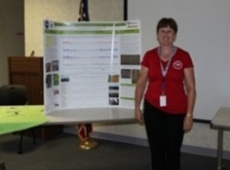 |
Seasonal Air Quality in Oregon – Jodie Harnden Air quality in Oregon is influenced by several factors depending on the season. Air quality in the summer and fall are dominated by forest fires and agricultural burning. Winter and spring are dominated by heating buildings- such as wood burning stoves. |
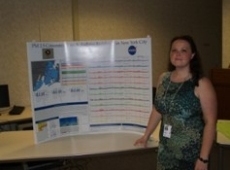 |
Asthma and PM2.5 in New York – Samantha Adams Air quality in big cities like New York is a growing problem, especially for adults and children with asthma. South Bronx and East Harlem has high concentrations of highways, sewage treatment plants and bus depots as well as high rates of hospitalizations due to asthma. Particulate matter smaller than 2.5 µg data is collected from 13 ground stations throughout New York City and compared to number of hospitalizations of asthma patients. |
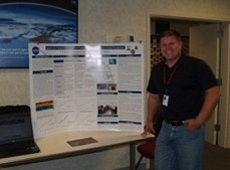 |
CO2 spatial and temporal variability: local to global – Tim Kubinak Through the use of satellite data (AIRS on AQUA), ground station data, and data analysis software, the project takes a math-based approach to examine the spatial and temporal variability of CO2. The satellite footprint, local variability, and hemispheric differences are examined to better understand the calculation of the global average of CO2 |
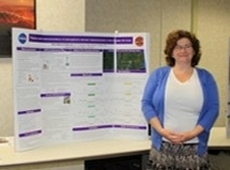 |
Physics and Instrumentation of atmospheric aerosol measurements in Greater DC Area – Ellen Babcock To truly understand an aerosol measurement, you must first understand the physics of the atmosphere and the physics of the instrumentation. Then the project looks at the physics of the AERONET sun photometer and how the instrument uses photons to measure aerosol content. Finally, aerosol data is presented from the DRAGON network during the DISCOVER-AQ mission in 2011 in the greater DC area. |
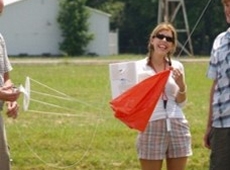 |
Berkley CO2 data – Sandy Ranstead The BEACO2N project based out of UC Berkley has set up several ground stations that collect hourly CO2 data at different locations throughout the greater Berkley area. Three geographically different locations were chosen and compared to understand daily variability and small scale interactions of CO2 within the boundary layer of the atmosphere. The temporal variability and vertical distribution on CO2 in the lower troposphere can be compared to aircraft CO2 measurements. |
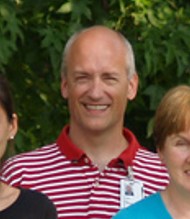 |
Impacts of Climate Change on Ozone in Atlanta – Roy Landers To study air quality over time in Atlanta, three sites will be compared both in short and long time spans. Three sites- an urban, suburban, and rural- will be compared to see daily variability in hourly air quality data. Data from the last 25 years will also be studied to search for impacts of climate change on air quality in Atlanta. |
Comparison of Handheld Atmospheric Instruments for GLOBE
– Alec Weisman, Charles Haggard, Margaret Pippin
Long-Term Engagement in Authentic Research with NASA
– Simone Hyater-Adams, Margaret Pippin
Publications & Presentations
Long-term Engagement in Authentic Research with NASA (LEARN): Innovative Practices Suggested by a New Model for Teacher Research Experiences
– M. Pippin, J. Joseph, M. Yang, A. Omar, S. Crecelius, T. Harte, P. Lewis, J. Taylor, R. Bujosa, C. Moulton, C. Haggard, S. Hyater-Adams, R. Kollmeyer, A. Weisman
Long-term Engagement in Authentic Research with NASA (LEARN): Lessons Learned from an Innovative Model for Teacher Research Experiences
– M. Pippin, R. Kollmeyer, J. Joseph, A. Omar, T. Harte, J. Taylor, A. Weisman, S. Hyater-Adams




